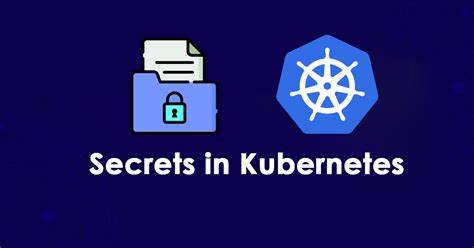☑️Day 42: Exploring Secrets in Kubernetes🚀
 Kedar Pattanshetti
Kedar Pattanshetti
🔹Table of Contents :
Introduction
Benefits of Using Secrets
Creating and Managing Secrets
Real-Time Scenarios for Using Secrets
Hands-On Tasks
Task 1: Encrypting and decrypting a Secret for
application.propertiesTask 2: Creating a Secret from
environment.shfileTask 3: Storing and managing MySQL credentials securely
Detailed Commands and Examples
Common Challenges and Troubleshooting
✅What are Secrets in Kubernetes?
Secrets are used to store sensitive data, like passwords, API keys, and certificates, separately from the application code.
They provide a more secure way to store sensitive information compared to ConfigMaps because they are base64 encoded.
Kubernetes Secrets are not encrypted by default but are encoded to prevent accidental exposure.
✅Why Use Secrets?
Secure Storage: Helps keep sensitive information separate from application code and configuration.
Access Control: Secrets can be accessed only by the Pods that have been granted access.
Simplified Management: Managing secrets across different environments (Dev, Test, Prod) becomes easier and more secure.
✅Creating Secrets in Kubernetes
1. Using kubectl Command
You can create a secret using the kubectl command:
kubectl create secret generic my-secret --from-literal=username=admin --from-literal=password=secret123
2. Creating Secrets Using a YAML File
A YAML file can also be used to create secrets. Here’s an example of a secret.yaml file:
apiVersion: v1
kind: Secret
metadata:
name: my-secret
type: Opaque
data:
username: YWRtaW4= # base64 encoded "admin"
password: c2VjcmV0MTIz # base64 encoded "secret123"
Apply the YAML file with:
kubectl apply -f secret.yaml
✅Encoding and Decoding Secrets
Encode a String to Base64:
echo -n "admin" | base64Decode a Base64 String:
echo -n "YWRtaW4=" | base64 --decode
✅Tasks Performed
Task 1: Decrypt a Secret in YAML Format
Create a file named
application.propertieswith some sensitive information.echo "db.username=admin" > application.properties echo "db.password=secret123" >> application.propertiesEncrypt the contents using
kubectl:kubectl create secret generic app-secrets --from-file=application.propertiesView the secret in YAML format (note that the data will be base64 encoded):
kubectl get secret app-secrets -o yamlDecode the data manually to verify:
echo -n "<base64_encoded_value>" | base64 --decode
Task 2: Create a Secret from environment.sh
Create the
environment.shfile with the following content:echo "variable1=value1" > environment.shCreate a secret using the file:
kubectl create secret generic env-secret --from-file=environment.shView the created secret:
kubectl get secret env-secret -o yamlDecode the base64 encoded values:
echo -n "<base64_encoded_value>" | base64 --decode
Task 3: Create Secrets for MySQL
Encrypt MySQL username and password:
echo -n "mysqluser" | base64 echo -n "mysqlpassword" | base64Create a
mysql-secret.yamlfile:apiVersion: v1 kind: Secret metadata: name: mysql-secret type: Opaque data: databaseusername: bXlzcWx1c2Vy # base64 encoded "mysqluser" databasepassword: bXlzcWxwYXNzd29yZA== # base64 encoded "mysqlpassword"Apply the secret:
kubectl apply -f mysql-secret.yamlVerify the created secret:
kubectl get secret mysql-secret -o yamlDecode to confirm the values:
echo -n "bXlzcWx1c2Vy" | base64 --decode echo -n "bXlzcWxwYXNzd29yZA==" | base64 --decode
✅Real-Time Scenarios Where Kubernetes Secrets Are Useful
Database Credentials: Storing database usernames and passwords securely.
API Keys and Tokens: Managing access tokens for third-party services.
SSL Certificates: Storing SSL certificates to enable secure communication.
✅Commands Recap
Create a Secret from literals:
kubectl create secret generic my-secret --from-literal=username=adminCreate a Secret from a file:
kubectl create secret generic my-secret --from-file=application.propertiesEncode to Base64:
echo -n "value" | base64Decode from Base64:
echo -n "encoded_value" | base64 --decodeApply a YAML file:
kubectl apply -f secret.yamlGet a Secret in YAML format:
kubectl get secret my-secret -o yamlDelete a Secret:
kubectl delete secret my-secret
🚀Thanks for joining me on Day 42! Let’s keep learning and growing together!
Happy Learning! 😊
#90DaysOfDevOps
Subscribe to my newsletter
Read articles from Kedar Pattanshetti directly inside your inbox. Subscribe to the newsletter, and don't miss out.
Written by
